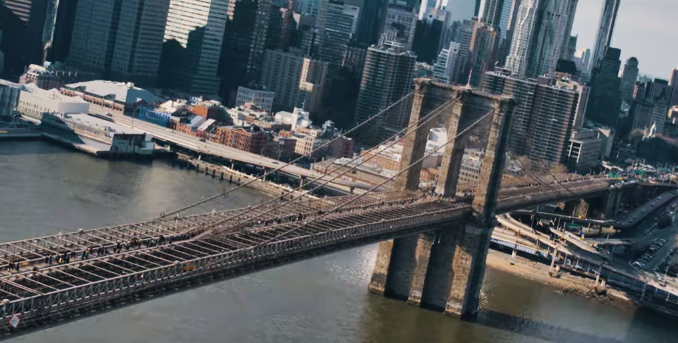
Brooklyn Bridge – Length
The total length of the Brooklyn Bridge is 1,825.4 meters or 5,989 feet. Its height over mean water is 84.3 meters or 276.5 feet. Its width is 25.9 meters or 85 feet. Its main and longest span across the river measures 486.3 meters or 1,595 feet and 6 inches.
The Brooklyn Bridge is a suspension bridge spanning across the East River of New York City and connecting the two boroughs of Brooklyn and Manhattan. The construction of the bridge began in 1869 and finished in 1883, after 14 years. It is one of the oldest roadway bridges in the US. For a period of over 130 years, the bridge and its steel cables and granite towers have offered a picturesque and safe passage for millions of cars, commuters, cyclists, trains, pedestrians, and pushcarts.
More than 600 workers were involved in the construction of the bridge. Nearly 25 people died during the construction phase, which included the original engineer/designer of the project. The cost of building the bridge totaled to be $15 million, which is equivalent to over $319 million in 2018. Currently, the bridge ferries over 140,000 pedestrians and vehicles (cars only) on a daily basis. There are 6 lanes of roadway and separate paths for cyclists and pedestrians.
Several names were suggested for the Brooklyn Bridge, including the East River Bridge and the New York and Brooklyn Bridge. In 1915, the city government formally named it the Brooklyn Bridge.
The Brooklyn Bridge is now regarded as an iconic part of the city. In 1964, it was deemed a National Historic Landmark and in 1972 it was designated as a National Historic Civil Engineering Landmark.
Brooklyn Bridge Construction – History
The Brooklyn Bridge was designed and created by John Augustus Roebling; he was known to be a pioneer in construction of suspension bridges. The German born US immigrant had done industrial engineering before coming to America in 1831. He tried his hand at farming but failed. He subsequently began working as a civil engineer and later launched a successful factory that produced wire cables. He also became well-known as a designer and creator of suspension bridges, which were popular during that era, but equally infamous for failing under heavy loads or powerful winds.
Roebling added a web truss to both the ends of a suspension bridge roadway thereby significantly increasing its stability. This was a major innovation in the technology of building suspension bridges. With the help of the web truss model, he had built a few bridges in New York, Niagara Falls, and Ohio. In 1867, due to such accomplishments of Roebling, the legislators of New York approved his plans for construction of a suspension bridge between Brooklyn and Manhattan over the East River.
In 1869, just before work began on construction of the bridge, Roebling’s toe was smashed by a boat when he was inspecting the site. His toe was amputated, but he developed tetanus infection and passed away after 3 weeks. Washington A. Roebling, his son, then took over the job as the chief engineer. Washington had helped Roebling on construction of many bridges as well as in designing the Brooklyn Bridge.
The Design: Even though in technical terms, the Brooklyn Bridge is a suspension bridge, its design is more similar to a hybrid suspension/cable-stayed bridge. The towers are made of granite, limestone, and Rosendale cement.
The Brooklyn Bridge featured several compartments and passageways in the tower’s anchorages. The huge vaults below the Manhattan anchorage of the bridge was leased out by the city to accumulate funds for the construction and maintenance.
The bridge features a neo-gothic architectural style and is marked by pointy arches located over the passageways across the stone tower-structures. The bridge has a silver and Brooklyn bridge tan paint scheme. However, there has been some debate that the original color of the bridge was Rawlins red.
The construction process: In order to create a solid and strong foundation, the riverbed was excavated by workers in huge wooden airtight boxes known as ‘caissons.’ Large granite blocks kept the boxes pinned to the floor of the river and compressed air was continuously pumped into the chambers to keep out debris and water.
Workers, who were referred to as ‘sandhogs,’ used dynamite and shovels to remove the boulders, stones, and mud present on the river’s floor. Most of the workers were immigrants who had per day wages of $2. With each passing week, the caissons moved nearer to the river’s bedrock. After reaching an adequate depth, which was around 80 feet at the end of Manhattan and 45 feet at the end of Brooklyn, the workers started laying granites and working their way towards reaching the surface above.
The conditions of the workers in the underwater caissons were really bad. The dense and hot air resulted in itching skin, massive headaches, slowed heart rate, and bloody noses. These symptoms were not really dangerous and hence work carried on. However, the process of going into the depths of the river and back up was quite dangerous. Workers stepped inside airlocks (small iron boxes) to ride down to the caissons. These airlocks filled with pressurized air as it went down into the river. The pressurized air helped keep out water from the caissons, but it also caused increasing levels of gas to get dissolved into the bloodstreams of the sandhogs. After the workers came back up, the dissolved gases present in their blood got released rapidly.
Such dissolving and release of the gases often resulted in numerous painful symptoms referred to as ‘the bends’ or ‘caisson disease.’ The symptoms included convulsions, extreme unbearable joint pain, speech problems, paralysis, numbness, and fatalities in some instances. Over 100 workers were afflicted by the disease. Even Washington Roebling suffered from it and was partially paralyzed. Subsequently, he managed and oversaw the construction with the help of his wife Emily. He used a telescope to an eye on the construction work from his apartment.
Unveiling of the Brooklyn Bridge: The Brooklyn Bridge was opened on May 24, 1883. Thousands of people from both Brooklyn and Manhattan turned up for the opening ceremony. President Chester A. Arthur, Governor of New York Grover Cleveland, and other local politicians crossed the bridge accompanied by troops and a military band. There was canon fire after they reached the other side. The first one to ride over the bridge was Emily Roebling. Numerous speeches, fireworks, and receptions were a part of the opening-day festivities. The bridge was opened to the public just before midnight and within 24 hours over 150,000 people had used it.
Renovation: An inspection on the condition of the Brooklyn Bridge was carried out in 2007 and it indicated a ‘poor’ rating for the iconic structure. Subsequently, a renovation project worth $508 million was launched in 2010 and finished in 2015.
Brooklyn Bridges – Pictures
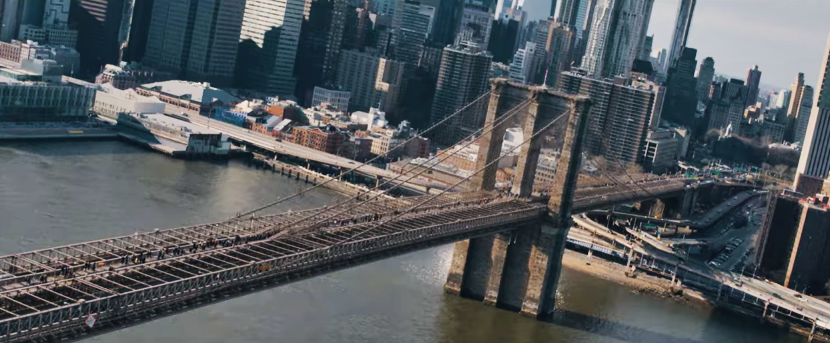
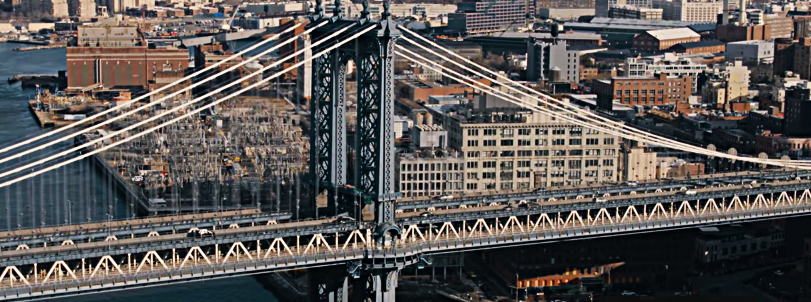
Trivia
- The Brooklyn Bridge has been often called the ‘eighth wonder of the world.’ It was the tallest structure in the Western Hemisphere for many years after it was constructed.
- Brooklyn was not a part of NYC when the bridge was being constructed. Thus, the bridge helped connect two different cities. Brooklyn was merged into NYC in 1898, thereby creating Greater New York.
- T. Barnum marched 21 elephants across the bridge in May 1884 to quell all doubts about the stability of the bridge.
- There is no toll for using the bridge. It is free both ways.
- The Brooklyn Bridge was built at a cost of $15 million; today its value is more than $3.5 billion.
- The construction process has been detailed in the 1972 book ‘The Great Bridge’ written by David McCullough.
Brooklyn Bridge – At Night (Is it Safe?)
Of course, Brooklyn Bridge is quite photogenic at night. The bridge tends to be relatively crowded at night, even at early wee hours of 3 and 4 AM, when the weather is good.
There are two pedestrian entrances, one is right off Adams Street close the Federal Courthouse at Brooklyn Heights. The other path is at Washington Street in Dumbo. One thing to bear in mind is that you should ideal walk on the pedestrian path and not stray at the bike lane. The bikes are known to come rather quickly, so it is better to walk with people at the pedestrian path. As far as safety is concerned, Brooklyn Bridge is not only picturesque, it is quite safe at night. The views are even beautiful from the luminescent Manhattan Bridge.
Brooklyn Bridges – Images at Night
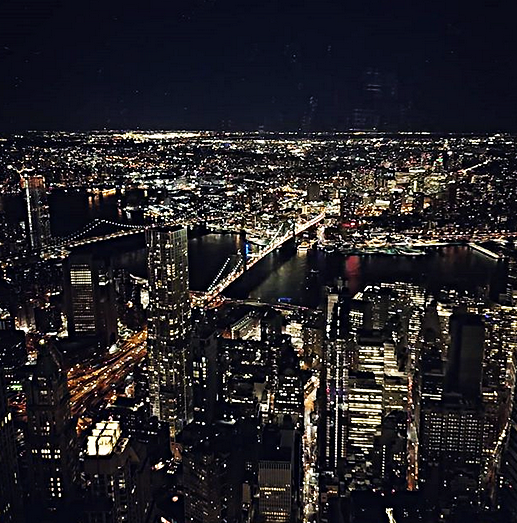

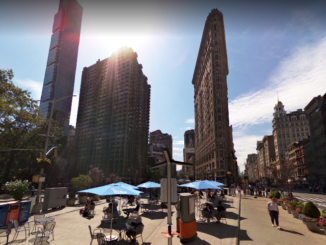
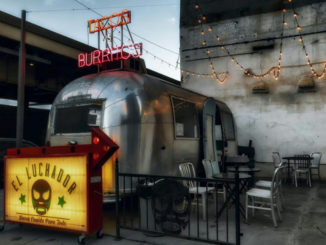
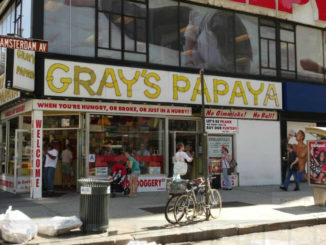
Be the first to comment